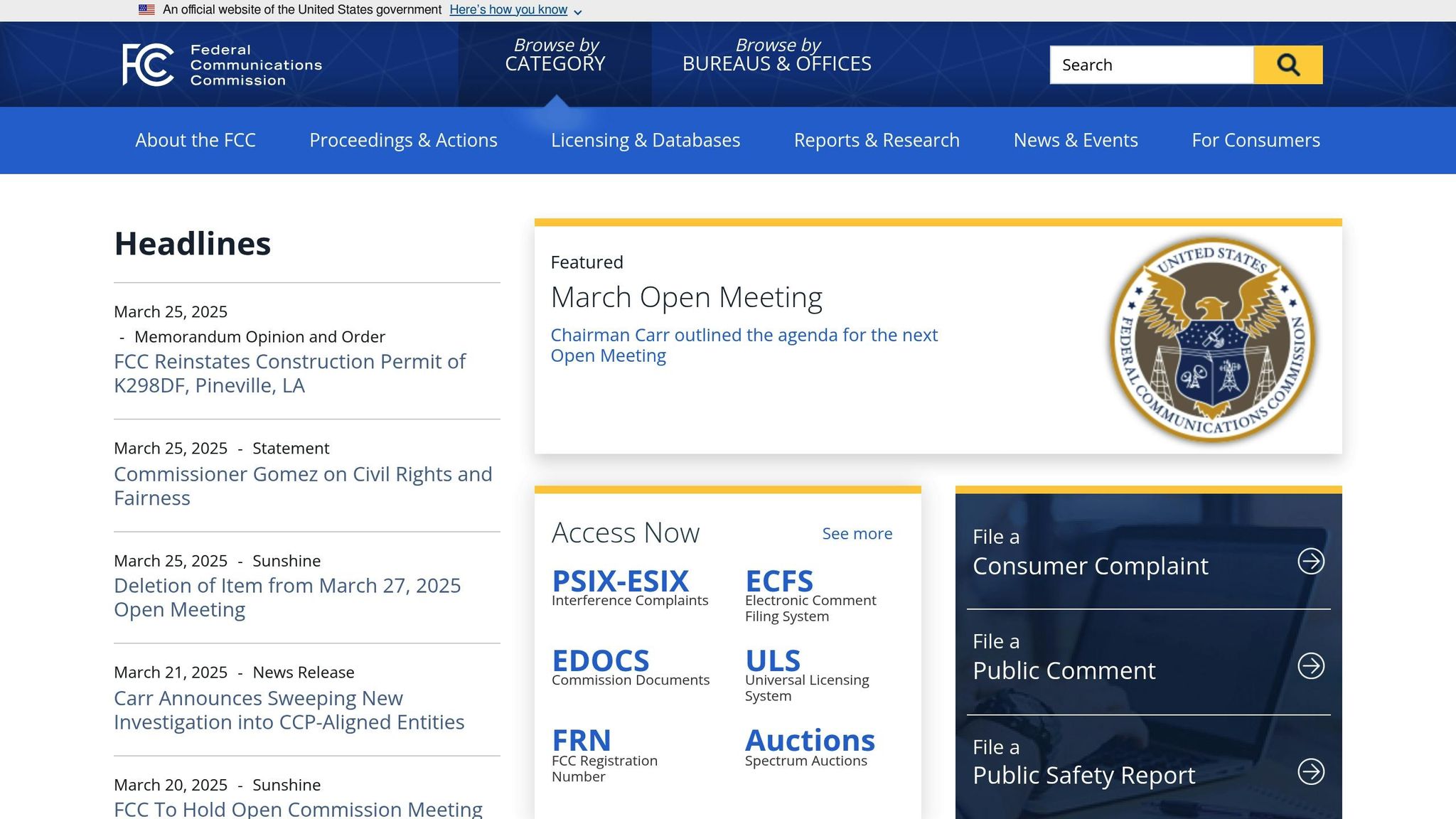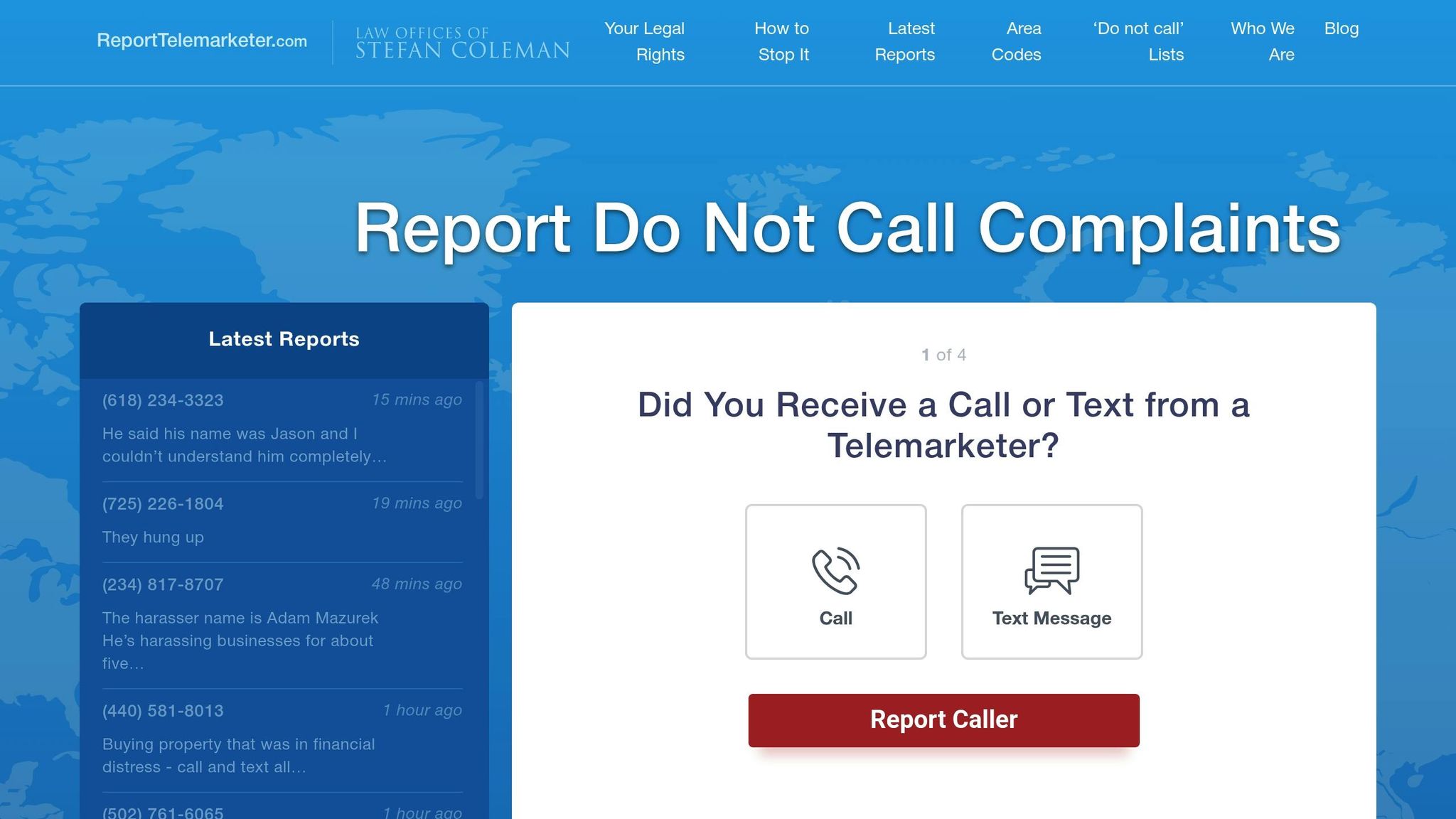
TCPA audits help ensure your business complies with telemarketing regulations. Here’s a quick guide:
- Frequency:
- High call volumes (over 25,000/month): Monthly audits.
- Medium call volumes (5,000–25,000/month): Quarterly audits.
- Low call volumes (under 5,000/month): Semi-annual audits.
- Key Factors:
- Higher call volumes = more frequent audits.
- Industry risks and new system updates impact timing.
- Core Focus Areas:
- Consent records.
- Do Not Call list compliance.
- Employee training.
- When to Audit Immediately:
- System updates (e.g., new dialing software).
- Regulatory changes.
Regular audits, combined with spot checks, help maintain compliance and avoid penalties.
TCPA Audit Frequency Guidelines
Standard Audit Timeframes
When planning audits, base the schedule on your business size and level of risk. Factors like call volume and industry-specific risks should guide your decisions. Use thorough audits as a key compliance tool while conducting regular checks on call recordings, consent records, and Do Not Call lists to stay compliant. After setting a baseline, adjust your schedule based on additional factors.
What Affects Audit Timing
Several factors influence how often you should conduct audits:
- Higher outbound call volumes require more frequent checks.
- Industries under stricter scrutiny demand more rigorous oversight.
- System updates or strategic changes may call for immediate audit adjustments.
Your audit schedule should align with your business operations and the risks you face.
Required Audit Schedule
Although TCPA rules don’t specify exact audit intervals, it’s important to establish a routine. Include both full audits and targeted compliance checks in your plan. Keep detailed records of audit results and any corrective actions, ensuring they meet regulatory retention requirements. If you make major changes to your systems or processes, conduct an immediate review. Routine and flexible audits help catch potential issues early and ensure ongoing compliance.
FCC SERIES: EPISODE 9 – Alignment, Auditing, and …

Main TCPA Audit Components
A thorough TCPA audit focuses on three main areas: customer consent records, Do Not Call list compliance, and employee training. These elements are crucial for maintaining compliance.
Checking Consent Records
Ensure you have clear documentation of customer consent for automated calls or texts. This is a critical part of any TCPA audit.
Do Not Call List Compliance
Verify your registration with the National Do Not Call Registry and keep an updated internal Do Not Call list. This helps avoid contacting individuals who have opted out.
Employee Training
Evaluate your employee training programs regularly to ensure they align with TCPA requirements. Testing staff understanding is key to staying compliant.
Incorporate these steps into your routine audits to keep up with changes in regulations and call systems.
sbb-itb-a8d93e1
Setting Up Regular TCPA Audits
Once you’ve established the timing and core components of your audits, it’s time to create a structured program that keeps compliance monitoring consistent and effective.
Planning Audit Dates
For organizations handling more than 10,000 calls each month, plan for quarterly audits. If your call volume is lower, semi-annual reviews should suffice.
Key tips for scheduling:
- Plan audits 2–3 weeks before quarterly reporting deadlines.
- Steer clear of peak calling seasons to minimize disruption.
Audit Team Roles
A well-defined team is crucial for successful audits. Below are the key roles and their responsibilities:
| Role | Responsibilities | Time Commitment |
|---|---|---|
| Compliance Officer | Leads and oversees the audit process | 15–20 hours per audit |
| Legal Representative | Ensures adherence to regulations and reviews documents | 10–15 hours per audit |
| Operations Manager | Evaluates call practices and procedures | 12–15 hours per audit |
| IT Administrator | Confirms system integrations and technical compliance | 8–10 hours per audit |
These roles work together to ensure thorough and efficient compliance checks.
Fitting Audits into Operations
To keep audits from disrupting daily operations, consider these strategies:
- Break Audits into Segments: Spread the process over several weeks to reduce strain on resources.
- Automate Monitoring: Implement tools that continuously track compliance metrics between audits.
- Centralize Documentation: Use a digital repository to organize audit records and compliance documents.
Updating Audit Schedules
Keep your TCPA audit schedule aligned with your business needs. Regularly review how often audits are conducted to ensure compliance and maintain efficiency.
Audits for Growing Companies
When your business expands, adjust audit schedules to handle increased call volumes and operational complexity.
Call Volume Guidelines:
| Monthly Call Volume | Recommended Audit Frequency | Extra Monitoring |
|---|---|---|
| Under 5,000 calls | Semi-annually | Monthly spot checks |
| 5,000-25,000 calls | Quarterly | Bi-weekly reviews |
| Over 25,000 calls | Monthly | Weekly compliance checks |
| Multiple locations | Monthly per location | Daily monitoring |
If call volumes jump by 30% or more, consider adding extra reviews to address the increased activity.
Growth often brings operational changes, including new technologies, which may also require updates to your audit schedule.
Changes in Call Systems
Major updates to your call systems call for immediate adjustments to your audit schedule.
Key Triggers:
- New dialing software introduced
- Additional communication channels integrated
- Consent management systems updated
- Changes to call recording protocols
Perform an initial audit within 30 days of any system change. Then, conduct bi-weekly reviews for the next 90 days to ensure everything is running smoothly.
Both system updates and regulatory changes demand proactive adjustments to your audit process.
New TCPA Rules
When new TCPA rules are introduced, your audit schedule should be updated promptly.
Steps to Respond:
- Conduct a full audit as soon as new rules are announced
- Focus on compliance areas affected by the changes
- Revise audit checklists and documentation
- Retrain your audit team to meet updated requirements
For the first 60 days after changes, apply enhanced monitoring with weekly compliance checks.
You may also need to increase audit frequency during high-risk periods, such as:
- Political campaign seasons
- Major promotional events
- Expanding into new markets
- Times of significant staff turnover in compliance roles
Next Steps
TCPA Audit Summary
When creating your TCPA audit schedule, consider the level of operational risk and the volume of calls your organization handles. Businesses with high call volumes should plan for monthly reviews, while those with fewer calls can opt for periodic reviews paired with regular spot checks.
Key Areas to Review:
- Consent records
- Internal Do Not Call lists
- System configurations
- Staff training programs
- Call recording protocols
ReportTelemarketer.com Services

Using external resources can help fine-tune your compliance efforts. ReportTelemarketer.com provides insights to identify and address compliance gaps. Their platform reviews reported telemarketing activities to enhance audit efficiency.
What They Offer:
- Monitoring of reported telemarketing issues
- Investigation of potential TCPA violations
- Issuance of cease-and-desist notices for confirmed violations
- Documentation of consumer complaints
This feedback loop can reveal compliance issues that might otherwise be overlooked, helping to strengthen your audit process.
Starting Your TCPA Audits
Once your plan is outlined, follow these phased steps to kick off your audits effectively:
| Phase | Timeline | Key Actions |
|---|---|---|
| Initial Setup | First 30 days | Document practices and define key metrics |
| First Audit | Days 31-60 | Conduct a thorough review and identify gaps |
| Adjustment Period | Days 61-90 | Address issues and update procedures |
| Regular Schedule | Ongoing | Follow the frequency guidelines based on volume |
Focus on maintaining audit practices that adapt as your business grows. Always document findings and note any corrective actions taken.
Critical Areas to Monitor:
- Written consent records
- Management of internal Do Not Call lists
- Compliance with call time restrictions
- Use of automated dialing systems
- Adherence to text message regulations
- Employee training documentation